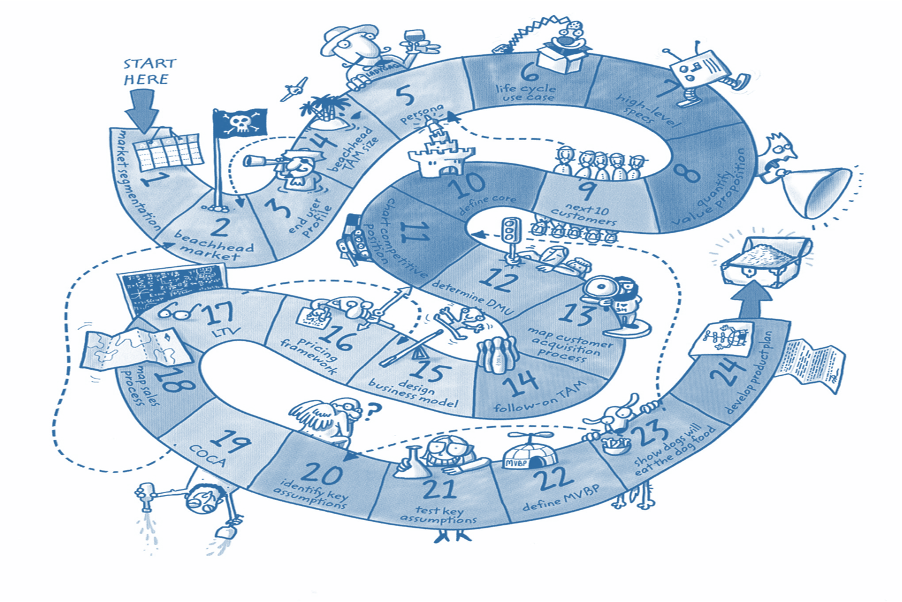If you’ve been reading along in this 30 Days to ETA series, you know that in the Day #14 post I discussed how to achieve ETA Engagement amongst your future employees. Why? It’s awfully difficult — Impossible! — to achieve happy customers if you have unhappy team members, and happy team members are engaged team members in your journey to Entrepreneurship Through Acquisition (You can read the previous post by CLICKING HERE). But what if there was a way to build the company of your dreams with an ETA Business Team? An awesome ETA Business Team that pulls just as hard as you do towards the business goal of not only acquiring, but building a company in order to sell it for maximum profit. In today’s 30 Days to ETA post, we’re going to explore how we can assemble our dream ETA Business Team of employees and executives, and in doing so how we can cultivate company culture and add employee incentive programs to ensure our ETA Engagement adds to company success… Enjoy!
The ETA Business Team
I shared a career opportunity post on my LInkedIn feed a few months back, searching for a team member to fill an executive position in my company. Sure enough, I had a few candidates present themselves who seemed to fit the position profile. During one of their interviews, I asked the candidate, “Where do you see yourself in a couple of years?” I’ll never forget his reply. With no shame, the young man said, “You know, I’ve always wanted to start my own private equity business. I thought working with you would give me enough information to go out and start my own business one day.”
What? Was I being punked here?? If you’re an ETA business owner, you might consider that answer to lead to an instant “no-hire!” However, I’m curious by nature so I asked the candidate, “Tell me about that answer. What about working here with me will allow you to start your own business?” He said, “I view what you’re doing here Mr. Palazzolo to be best-in-class, and if I was going to go out and attempt to start my own business I know I’d learn the ins/outs of running a business the right way from you.” Flattery will get you far, but not that far with me…
Why is the Grass Greener?
We all know that Entrepreneurship Through Acquisition (ETA) is a tough business model. Perhaps you can look at it and say that it’s not as tough as a Startup Entrepreneur might have it, but it’s tough nonetheless. So in your search for a business and in screening the ETA Business Team, why should you invest all of your time, energy, and money training and equipping what will inevitably be another company’s future employee? The short-answer, we shouldn’t. The long-answer, we should! If we train our ETA Business Team members and they leave to be part of a competitor’s workforce, or even worse, become our competition, we are doing what you probably did to get to the point where you’re exploring Acquisition Entrepreneurship.
Know that even with the best incentives in place, competing companies will attempt to lure your ETA Business Team members with promises of greener grass. Sometimes, you’ll have to gently prod your employees back in the right direction — Although it’s my best practice to let an employee leave if they’ve made up their mind and they’ve approached me on the topic. By the time your ETA Business Team member gets to you, they’ve probably thought long and hard about their search for/attainment of another opportunity. In other words, they’re already one foot out the door, so let them leave. They will quickly learn that the reason the grass is greener on the other side is because of the enhanced fertilizer being deployed!
Can You Encourage ETA Business Team Loyalty?
If your competitors do happen to catch employees’ eyes with those green pastures a plenty, what can you do to guide your ETA Business Team members gently back to the company? Is a healthy fear of ramifications possible to lead ETA Business Team members in the right direction to back?
While as I previously stated, one foot out the door should be followed by two. However, you may want to consider agreements or restrictions that you can put in place to help keep your ETA Business Team employees from becoming the competitions employees?
- A Non-Compete Agreement may help keep your employees from working with — or as — your competition.
- Non-Solicit Agreements prevent your employees from soliciting customers away from you — They also prevent vendors from soliciting your employees.
- A Confidentiality Agreement keeps ETA Business Team employees from revealing company secrets if they leave or talk to other business owners.
- Intellectual Property Agreements keep work employees did for a company within that company if the ETA Business Team employee leaves.
We all want to build a strong team of ETA Business Team employees who have our best interests at heart. There’s a fine line between making ETA Business Team employees fearful and establishing healthy protections against employee retribution or employee turnover. Before enforcing any employee agreements, consult with your attorney to protect yourself from any known or unknown business risks — In one instance I can recall, our attorney partner recommended that a noncompete would be worthless and not to initiate. It’s important to keep in mind that not all court jurisdictions honor employer-employee agreements, so check with a legal professional before you implement any of them to be sure they actually protect you.
SUMMARY
ETA Business Team turnover and ETA Engagement (i.e., Employee unhappiness or dissatisfaction) can hurt a company’s operations and value from the future buyer’s perspective. If as a buyer you notice that the organization you’re conducting due diligence on has current employees that don’t want to be at work or have already left via turnover data, why would you want to buy that business? If you decide to buy it, you’ll probably refuse to offer top dollar or valuation multiple for that business. On the other hand, if you discover a business that is treating employees the way you would want to be treated — An ETA Business that offered clearly defined long-term and short-term incentives — you’re willing to pay top dollar.
Sam Palazzolo




